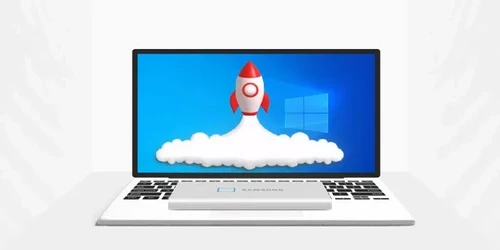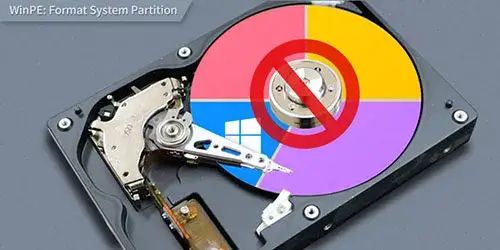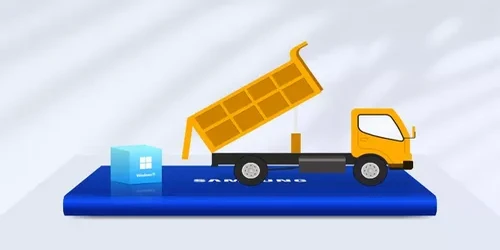Backup or Clone Which One is Better for Your Data Protection
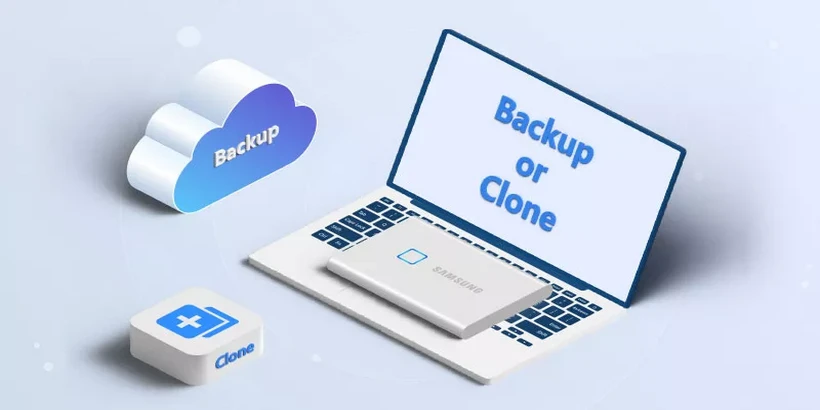
Quote: I often see the words "clone" and "backup" and it's a bit hard to tell the difference. I need a bigger hard disk for my system, which one should I choose? I hope someone can answer my question.
Once you've focused on backup-related issues, you've seen "Backup" and "Clone". By choosing either Backup and Restore of Disks or Disk Cloning, you can migrate your entire Windows system and installed software to another disk. But how to distinguish between the two? Here I will show you backup or clone which one is better for your data protection.
1. What Are Backup and Clone?
In general, backups often involve compressing files, and during the backup process, unused disk space doesn't need compression. Backups can be categorized into file backups and system backups. Additionally, backups can be incremental, meaning only the added or changed parts are backed up. Regularly, these incremental changes are updated, reducing backup time and saving storage space. Setting up a schedule, such as an automatic backup every morning at 7 a.m., is a common practice. If you're backing up certain files, the key difference from cloning lies in whether you can directly access the files. Backups can be performed using third-party software or the built-in tools.
Cloning requires a slightly larger hard drive than the original one because it not only "copy" files and applications but also replicates the entire disk, including unused space, maintaining the disk's structure. It's worth noting that cloning is a one-time action and doesn't have automatic updates afterward, usually performed using third-party software.
Both methods can address the issue of data duplication, and choosing between them becomes a matter of preference. Next, I will explain the subtle differences between the two and how these differences arise from a design perspective.
2. What Is the Difference between Backup and Clone?
Backups can be either system backups or file backups. It supports incremental backups, scheduled for automatic execution at a designated time each day. This allows you to use your computer with confidence, knowing that even in the event of mistakes or file losses, you can restore your computer to its previous state through the backup (assuming you haven't deleted the backup).
For example, you can create a backup of your current disk into your target disk. If you ever delete the original data, you can restore your backup to the computer, providing a form of insurance against unforeseen circumstances.
The goal of cloning is not to secure personal data but to migrate the entire system or disk. The emphasis is on data consistency, portability, and plug-and-play convenience. Cloning doesn't require restoration because it produces a well-organized file structure that can be directly opened and used. If your system disk is too small, causing decreased performance over time, and you need to upgrade to a larger capacity disk, cloning becomes very convenient. It eliminates the need for extensive system configurations and software installations.
So, the above explanations differentiate 'backup' and 'clone' from design and usage perspectives. If you're unsure how to proceed, I'll guide you through the process.
3. How to Backup and Restore?
Backup with CloneGo
Step 1: Install & Lanuch the Software.
Don't worry, it's a free download software. You can visit the website and download CloneGo.
Step 2: Click the Sidebar & Select Volume and Path.
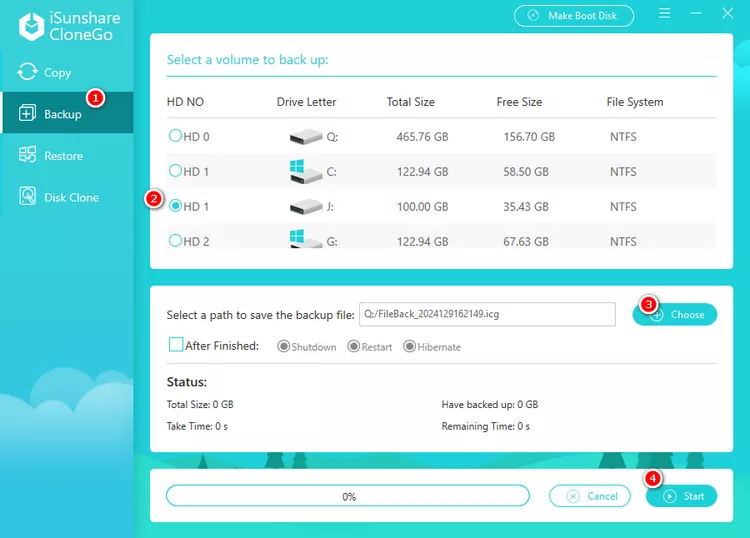
Tips: You can backup the system partion or backup other partitions. The process of backing up is to compress all the contents of the partition into a .icg file
Step 3: Click "Start", the software will confirm you want to backup.
If you want to do daily backups, please use the built-in Windows Backup & Restore (Windows 7). For more details, please read this article: copy system to a new hard drive without using third party software step by step, which describes the procedure in detail.
Restore with CloneGo
Step 1: select the restoration destination.
If you have backup a System partition and you want to restore it. you should check the “Set the target partition as the boot disk”.
Step 2: select a backup file to restore.
There may be several backup files named FileBack_yyyymmdd.icg on your computer, so you have to choose it. So far, we don't have incremental backups.
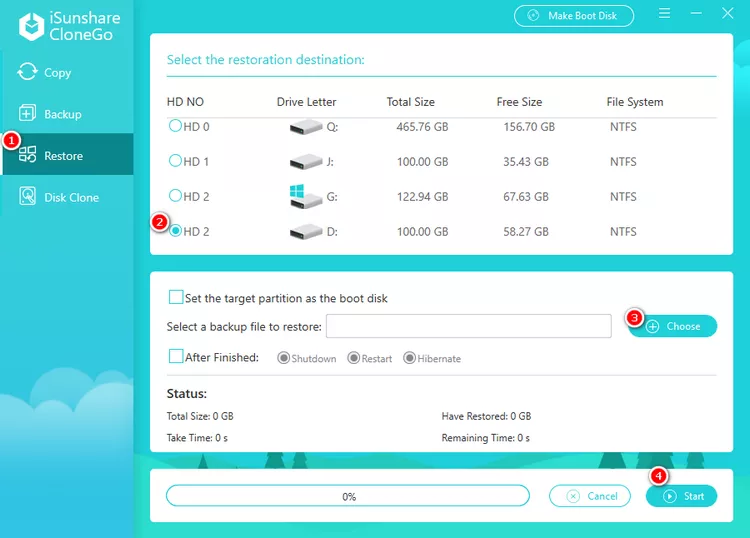
Tips: If you want to start the restore, remember save your important data on the target partition, because the destination disk will be formatted!
4. How to Clone and Boot from New Disk?
Step 1: Choose the sidebar "Clone" & Select the source and destination disks separately.
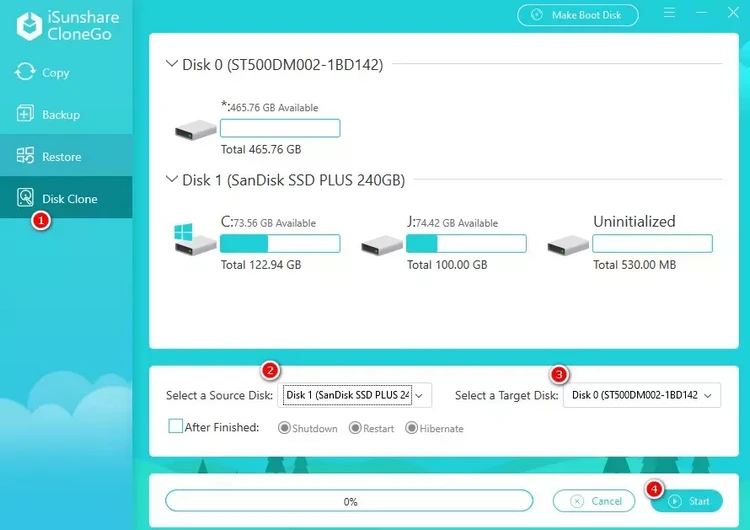
Step 2: Remove your old system disk and install the newly cloned drive.
Tips: If you encounter any problems during the cloning process, you can refer to these two articles: How to Migrate OS to a New SSD Windows 10/11 Without Data Loss, 5 Ways to Fix after Windows System Clone Can Not Boot From New Disk.
5. Note
If you want to back up your computer on a regular basis, you should choose backup & restore, because it automatically follows the rules of backup without having to repeat manual operations, and it takes up less disk space. However, if you want a quick replacement for your work computer system in case it crashes and interferes with your work, choose clone. In fact, both options are necessary to cope with the risks, and it is recommended to do both if you and your system security are important and you want to preserve your data perfectly.


